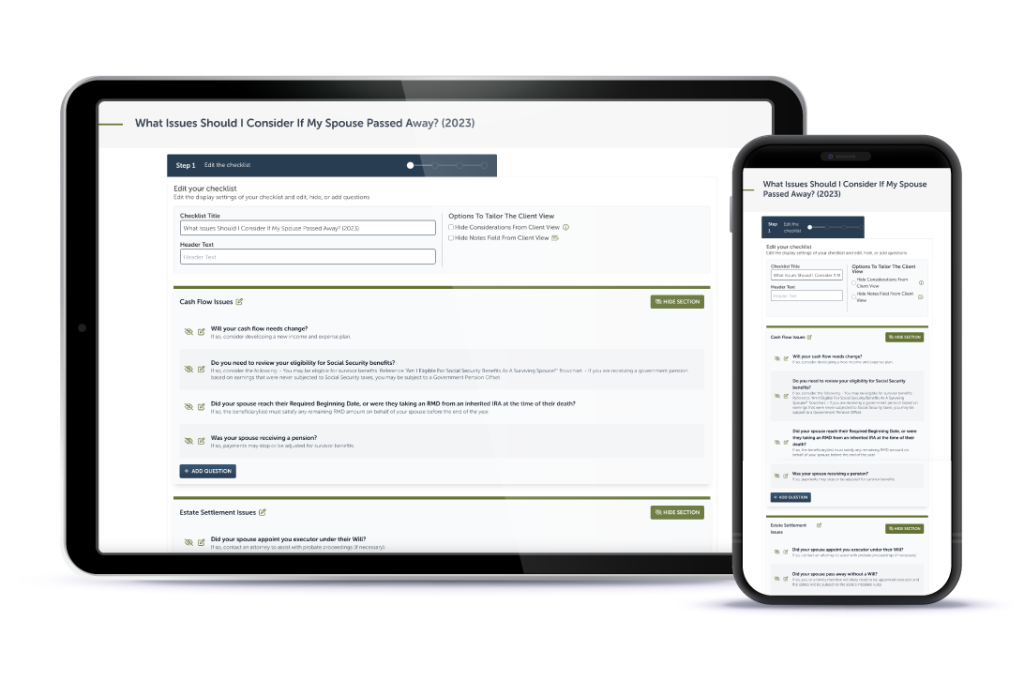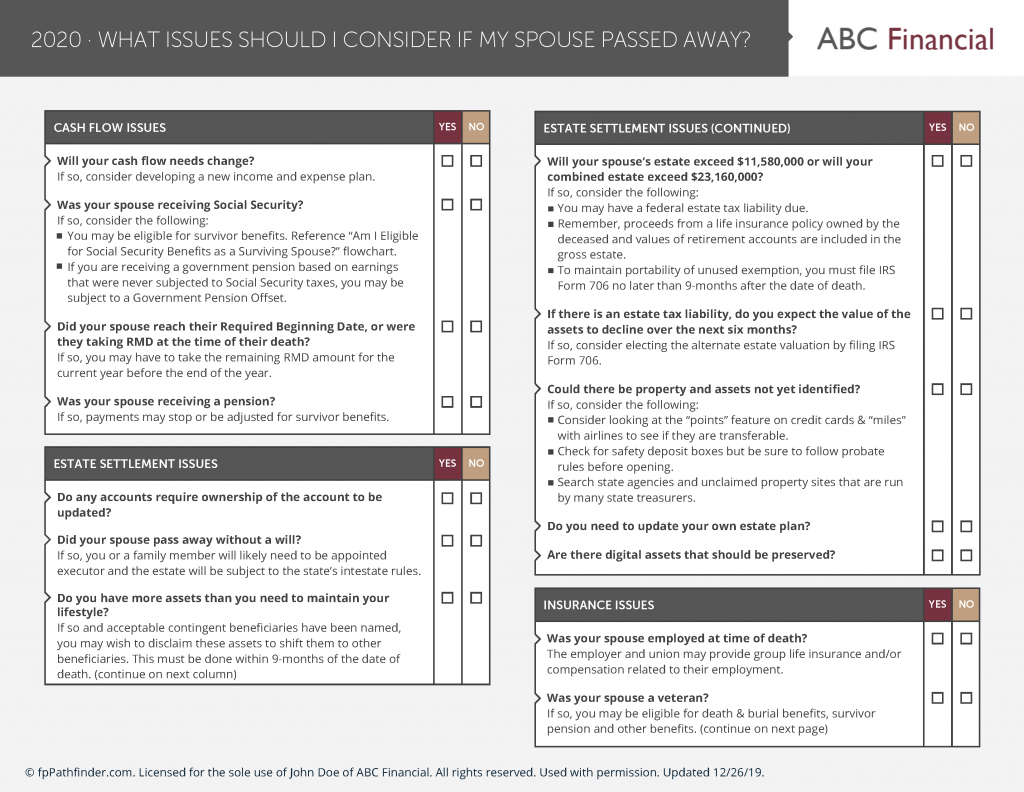After you’ve become a member, it’s time to start using these in your business. Below are five ways you can start to incorporate the checklists and flowcharts into your business.
- Assist in the decision-making process when formulating a recommendation: One of the clearest uses of flowcharts is to provide a visual depiction of the relevant factors to consider when making a recommendation. It can provide a general guide as to the questions that should be raised with the client, and the resulting implications from the decisions made.
- A quick introduction to a new concept. Using a flowchart prior to doing research on a financial planning issue is akin to providing a 10,000 foot overview. It doesn’t provide all the detailed knowledge, but it quickly gets the planner to hone in on the major issues that affect the client issue they are working on. From there, the planner can jump into other resources to clarify or deepen his/her understanding.
- Study tool: For students and new planners working toward their CFP credentials, flowcharts can be a useful study tool to help make a concept “stick” and easy to recall. What makes flowcharts particularly interesting is how the CFP Board exam tends to test not just on the rules, but on the exceptions to the rules using tricky questions. In these cases, flowcharts excel due to their ability to illustrate not just the rules, but the nuances and exceptions associated with the rules.
- Remember old/odd rules: There are many cases when financial planners are simply rusty on certain rules or the nuances associated with those rules. Rules around IRA contribution amounts and contribution limits are often a sticking point for many planners because they change almost every year.
- Quick reference: Instead of cracking open a voluminous reference guide, or trying to verify the most accurate rules online, it can be easy enough to have a series of fast reference flowcharts within arms reach.
If you have questions about how you can start to use these in your practice, send us an email



